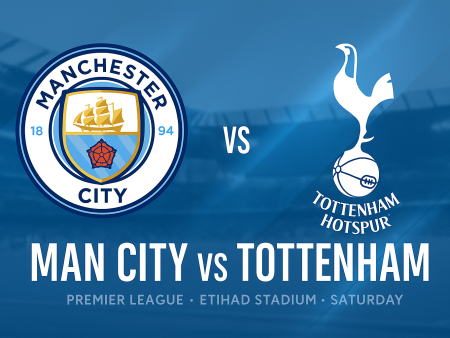Manchester City Edge Chelsea: Tactical Insights from a Top-of-the-Table Clash
Manchester City asserted their dominance in the Premier League with a measured yet powerful 1-0 win over Chelsea. The result reinforced Pep Guardiola’s grip on the title race and showcased the tactical evolution that has made City such a difficult opponent. This analysis breaks down the strategies, formations, and key moments from both teams to reveal how City achieved superiority over Thomas Tuchel’s side.
Manchester City’s 4-3-3 System and Key Personnel Decisions
Manchester City deployed their reliable 4-3-3 shape, making only slight adjustments to accommodate player availability and tactical nuance. John Stones slotted in for Ruben Dias in defense, while Kevin de Bruyne started over Ilkay Gundogan. In attack, Jack Grealish featured on the left, Raheem Sterling switched to the right wing, and Phil Foden operated as a false nine. This rotation of elite attackers, combined with consistency at the core, has been instrumental in their season-long success.
City’s Tactics When in Possession
With the ball, Manchester City morphed their structure to facilitate effective distribution and progression through Chelsea’s lines:
– **Back Build-Up:** City began play in a 2-3-2-3 setup, with fullbacks stretching the width and central midfielders dropping deep. Interestingly, fullbacks inverting was reserved for advanced build-up roles, not initial phases.
– **Involving the Goalkeeper:** Occasionally, Ederson joined the defenders as a third center back, forming a temporary back three alongside Rodri to offer numerical advantages in build-up, though his long passing was less emphasized compared to recent matches.
– **Progressing Forward:** As City advanced, their shape resembled a 2-3-5, packing players between Chelsea’s defensive and midfield lines and relying on Rodri to circulate possession and switch play.
– **Attacking Flanks:** Jack Grealish tested Antonio Rudiger in one-on-one situations, while Sterling exploited the relative lack of speed on Chelsea’s left side, especially targeting the space between Marcos Alonso and Malang Sarr.
– **Final Third Challenges:** Despite their domination, City struggled to deliver decisive balls into the box due to Chelsea’s numerical superiority in central areas. The lack of a classic striker to finish cross-and-pullback opportunities became apparent, as the visiting defenders consistently cleared danger.
City’s Defensive Excellence and Pressing Approach
While their attack produced sustained pressure, Manchester City layered their performance with a masterclass in out-of-possession organization:
– **Pressing in Phases:** On Chelsea’s goal kicks, City pressed in a 4-4-2, moving swiftly into a 4-2-3-1 as de Bruyne pushed higher to support Foden and Sterling. Their pressing forced Chelsea into horizontal play and ineffective long balls, denying them meaningful progression.
– **Midfield Shielding:** Dropping into a 4-1-4-1 shape in mid-block, City’s midfielders outworked and outnumbered their counterparts, pinning Jorginho and N’Golo Kante deep and away from attacking positions.
– **Limiting Threats:** Bernardo Silva and Rodri shielded the defense expertly. City’s high defensive line compressed space and neutralized potential runs from Chelsea’s forwards, leaving Romelu Lukaku reliant on sporadic, unsupported forays.
– **Composure Under Pressure:** On Chelsea’s rare counters, Rodri and Bernardo Silva halted transitions before they became dangerous, and Ederson’s sharp save from Lukaku’s only shot on target highlighted City’s all-round defensive poise.
Chelsea’s 3-4-2-1: System Adaptation and Shortcomings
Chelsea continued under Thomas Tuchel with their hallmark 3-4-2-1 system, though injury-related absences and some surprising selection choices altered the dynamic:
– **Lineup Adjustments:** Missing key components like Reece James and Ben Chilwell, Chelsea adapted with Alonso and Sarr filling in. Up front, Tuchel omitted the Champions League-winning trio of Werner, Havertz, and Mount, starting Lukaku as the central figure.
– **Connectivity Issues:** The supporting midfield struggled to link with the front line. Without Mount’s movement between the lines, Chelsea failed to establish efficient routes from defense to attack.
Chelsea on the Ball: Possession Problems and Lack of Penetration
Struggling to cope with City’s high pressure, Chelsea saw just 44% of the ball and only created notable chances after falling behind:
– **Ineffective Build-Up:** Chelsea largely abandoned patient play out from the back, instead attempting long passes and switches. Breakout moments were limited to second balls or Lukaku’s hold-up play, including one clear break in each half.
– **Lack of Creativity:** The Blues managed only one shot on target and seven touches in the penalty area—their lowest total in seven years. Dribbles were at a premium, with Chelsea completing just seven over the full match.
– **Missing Link:** The absence of a player to connect the midfield to the forwards (such as Mount) was glaring. Neither central midfielders nor wingbacks could offer consistent outlets or break through City’s structure.
Chelsea’s Defensive Strategy and Its Constraints
Despite their difficulties in attack, Chelsea’s defensive setup limited City’s scoring opportunities to some extent:
– **Structure and Formation:** In defense, Chelsea dropped into a 5-4-1 block, making themselves compact and forcing City wide. When they pressed higher, the shape reverted to a 3-4-2-1, occasionally disrupting City’s build-up play.
– **Central Security:** Having three center backs proved effective in defending the central areas—especially important given City’s lack of a central striker. This outnumbered City in the box and forced the hosts to attack from wide or distance.
– **Midfield Duels:** With Kante and Kovacic sitting in front of the defense, City’s attackers found the central corridors congested. This led City to circulate possession on the flanks in what often looked like a ring—or “doughnut”—around Chelsea’s block.
– **Limiting Damage:** Chelsea ultimately restricted City to a solitary goal, which came from a transitional moment and a long-range strike.
Key Takeaways and Title Implications
Manchester City produced a comprehensive demonstration of tactical discipline and fluid positional play. Their pressing and possession systems suffocated Chelsea’s attacks while providing enough cutting edge to secure victory. For Thomas Tuchel and Chelsea, a lack of attacking cohesion and inability to adapt to City’s pressing left them with few clear chances.
This win placed Manchester City 13 points ahead of Chelsea, reinforcing their position as Premier League leaders and emphasizing their continued excellence under Guardiola. As the season progressed, City’s blend of structure, work ethic, and tactical innovation continued to separate them from their closest rivals.
Summary Table: Key Match Statistics
| Statistic | Manchester City | Chelsea |
|---|---|---|
| Possession | 56% | 44% |
| Shots on Target | 4 | 1 |
| Touches in Penalty Area | 18 | 7 |
| Dribbles Completed | 12 | 7 |
Final Thoughts
Manchester City’s blend of tactical consistency and player versatility continues to set the benchmark in the Premier League. Their methodical dismantling of Chelsea underscores Guardiola’s influence on English football, while Tuchel’s men face the challenge of reigniting their attacking spark as the season unfolds.
For readers interested in deeper tactical breakdowns and trend analysis, further exploration into City’s evolving structure and Chelsea’s system adaptations could provide continued insight into the strategic battles shaping the Premier League.







